India: Tata Motors unveils Harrier.ev and Avinya X concept
The Harrier.ev is the first EV to use JLR’s D8 platform. Tata Motors modified the D8 into a lower-cost ICE platform called ‘OmegaArc’ and utilised it for diesel-powered Harrier and Safari SUVs. Now, the company has further re-engineered it for EV application and calls this version ‘Acti.ev+.’
Tata Motors did not disclose full technical details about the Harrier.ev at Auto Expo 2025, but it did reveal a few highlights. The company confirmed that it plans to offer the new electric SUV with AWD capability, making it the only one of its kind in the entire Tata line-up, including both ICE and electric models. Shailesh Chandra, Managing Director, Tata Motors Passenger Vehicles (TMPV) and Tata Passenger Electric Mobility (TPEM), stated that Harrier.ev will appeal to adventure enthusiasts and urban drivers alike.
Tata Motors says the Harrier.ev AWD has a ‘Quad Wheel Drive (QWD)’ powertrain. However, unlike the name suggests that does not mean that there are four motors – one powering each wheel, like in the Rivian R1T/R1S or the Mercedes G 580. But it is just a marketing term for a twin-motor AWD setup. The Harrier.ev’s two motors produce a total 500 Nm of torque.
The EV has a masculine character with an athletic stance and muscular surfacing. Split headlamps with a slim, full-width DRL strip, 19-inch alloy wheels, and strong shoulders further elevate its powerful appearance. Tata Motors equips it with a blanked-off, body-coloured upper grille featuring horizontal lines, a new lower grille with vertical slats, aero wheels, and a “.ev” badge to differentiate it from the combustion-engine Harrier. Additionally, the company uses a different finish on the lower part of the bumpers to add to the more polished look.
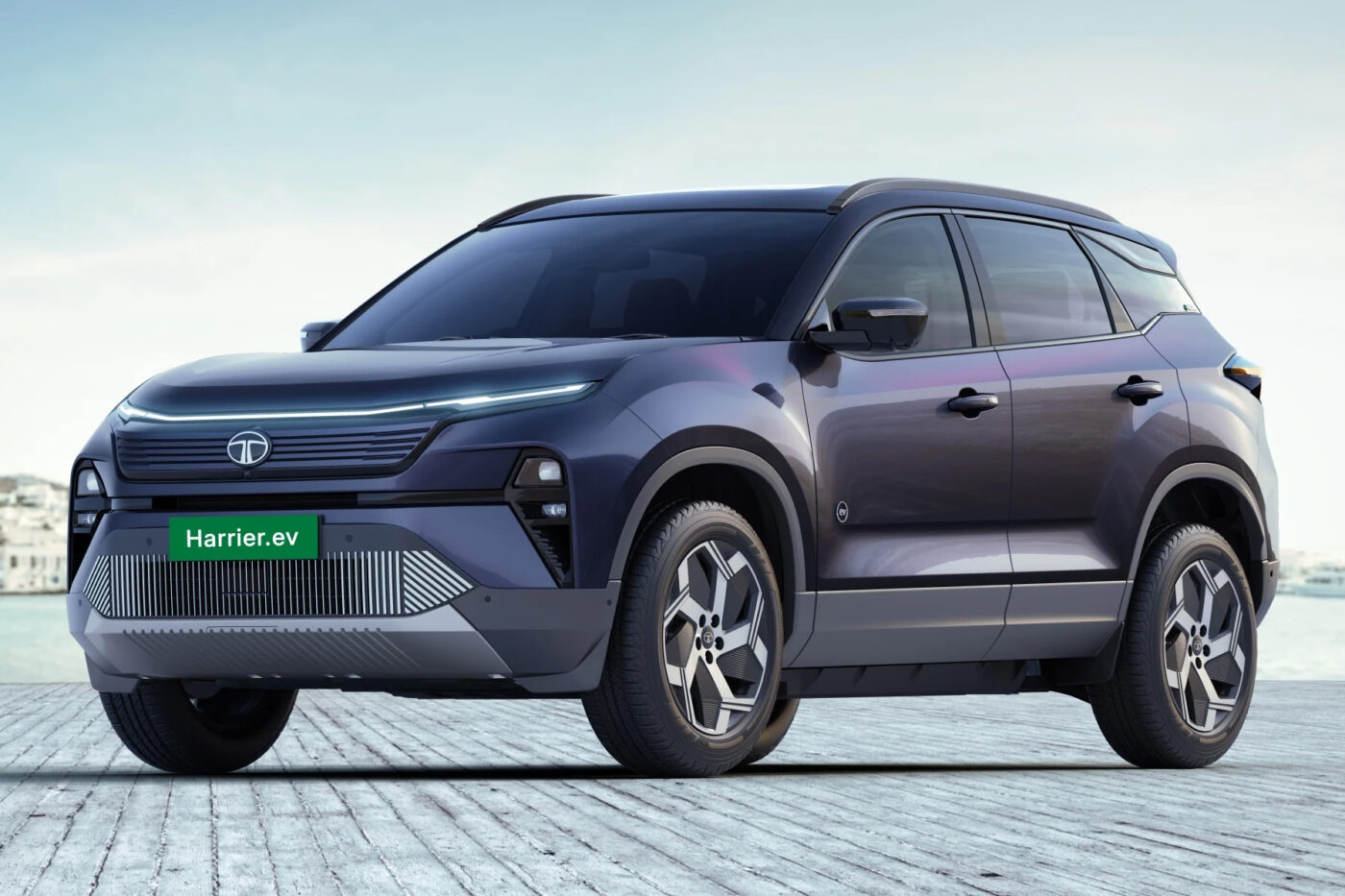
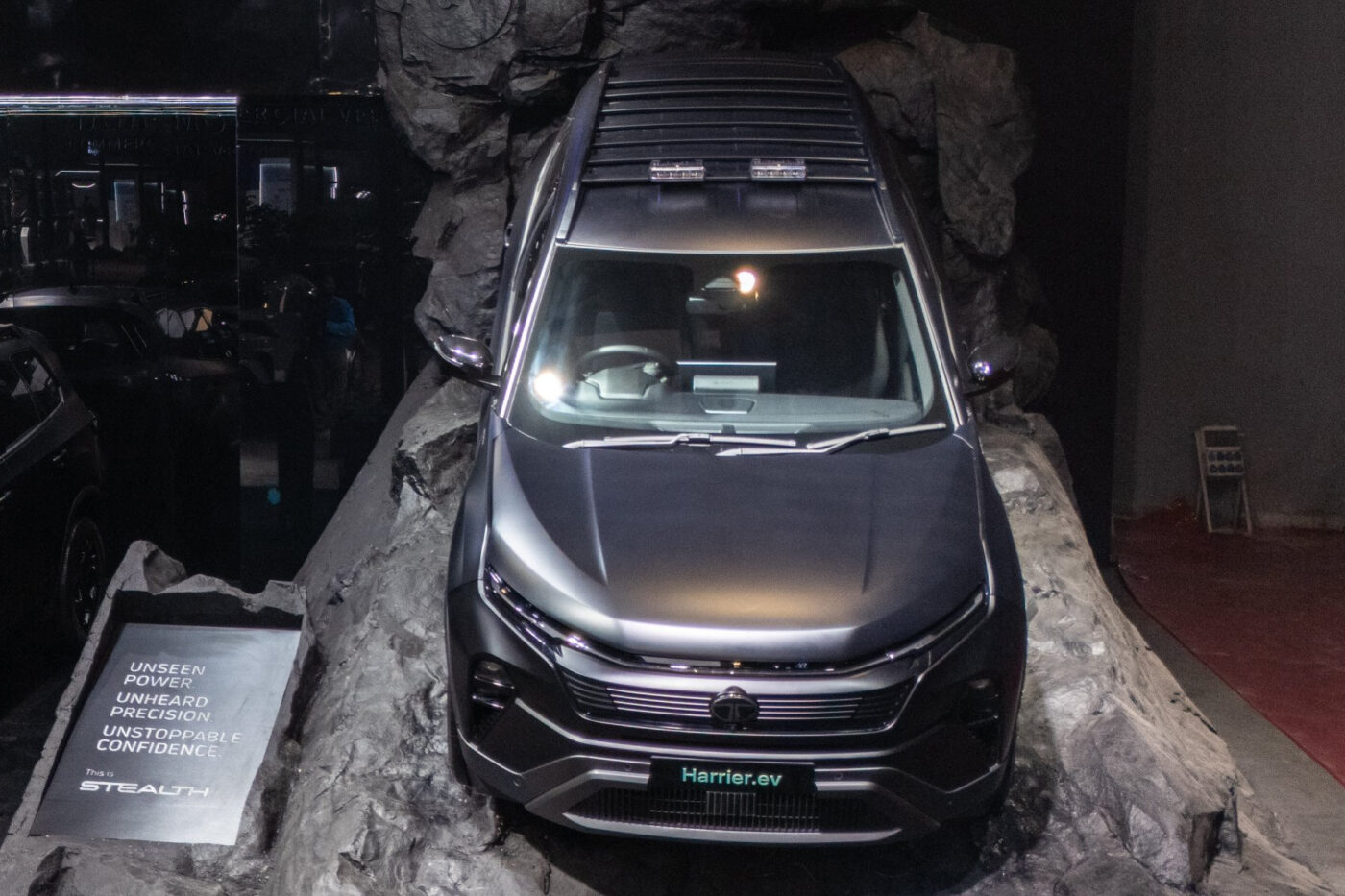
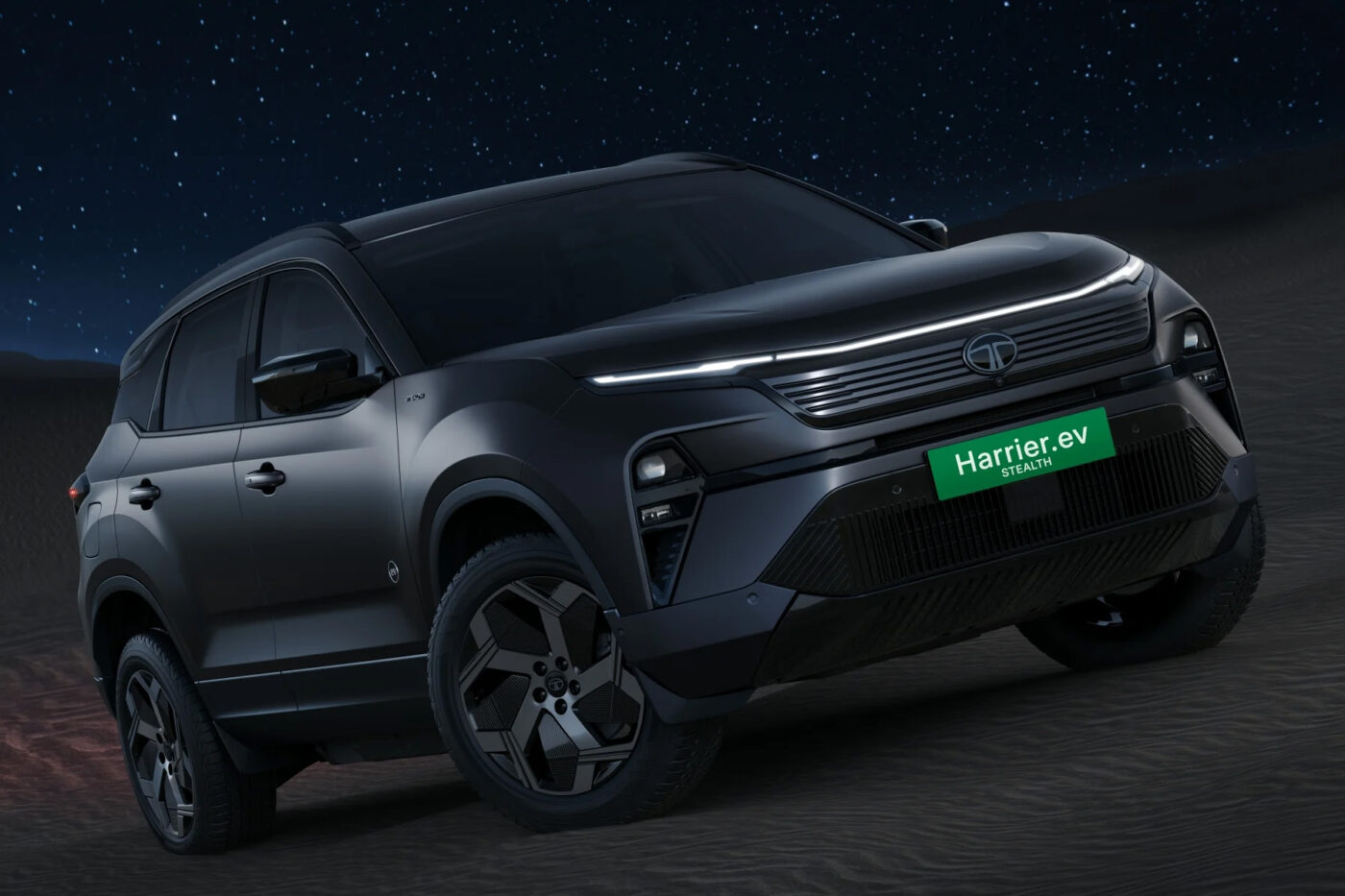

Inside, the Harrier.ev has the same modern design as its ICE donor model and features the same elegant dashboard, a four-spoke steering wheel with an illuminated brand logo, a 10.25-inch digital instrument cluster, a 12.3-inch touchscreen infotainment system, and a centre console housing a stubby gear lever, a rotary drive mode selector, and an electronic parking brake. That said, a predominantly white theme gives it a unique, more upscale appearance.
Tata Motors has also introduced a ‘Stealth Edition’ featuring matte black paint, chunky rocker panels, side steps, trail-ready wheels, and a roof mounting platform featuring two LED light bars for a more adventure-ready character. The latter features Granite Black leather upholstery instead, matching its dark exterior.
In addition to a cleaner styling, several additional features will help Tata Motors distinguish the Harrier.ev. For instance, the company gives a summon mode for more parking convenience. Advanced driving and parking assistants have only recently started becoming common among mass-market cars in India and are quickly emerging as key selling points. The Harrier.ev is among the first Indian cars possessing this capability. It features vehicle-to-load (V2L) and vehicle-to-vehicle (V2V) bi-directional charging functions as well.
Tata Motors plans to launch the Harrier.ev by March this year and may price it around 25 lakh Indian rupees (approximately 28,000 euros) in the base trim.
Tata takes the wraps off the Avinya X concept – at least partially
After entering bigger and more expensive vehicle segments with the Harrier and Safari from its core brand in 2018 and 2021, respectively, Tata Motors now aims to go further upscale with a series of dedicated EVs under a new brand – Avinya, meaning ‘Innovation’ in the Sanskrit language. The company is positioning Avinya as a luxury brand – a first for an Indian automaker.
The Avinya X is the second concept from the new brand following the catamaran-inspired show car simply called ‘Avinya’ from 2022. Tata Motors has yet to disclose the Avinya X’s dimensions but it seems to be a mid-size SUV. The new model looks bold and athletic in many ways, but overall, it has an understated, poised character, which echoes the design ethos of Range Rovers.
At the front, the Avinya X has a large rectangular mask featuring a fine texture and active air flaps, emphasising the strong focus on aerodynamic efficiency. The daytime running strips on the top slyly form the “T” letter, conveying Avinya’s belonging to the house of Tata Motors. The hood is straight and upright, complementing the prominent nose section and giving the vehicle a confident look. The Avinya X features Matrix LED headlights, quite possibly, a first for an Indian car.
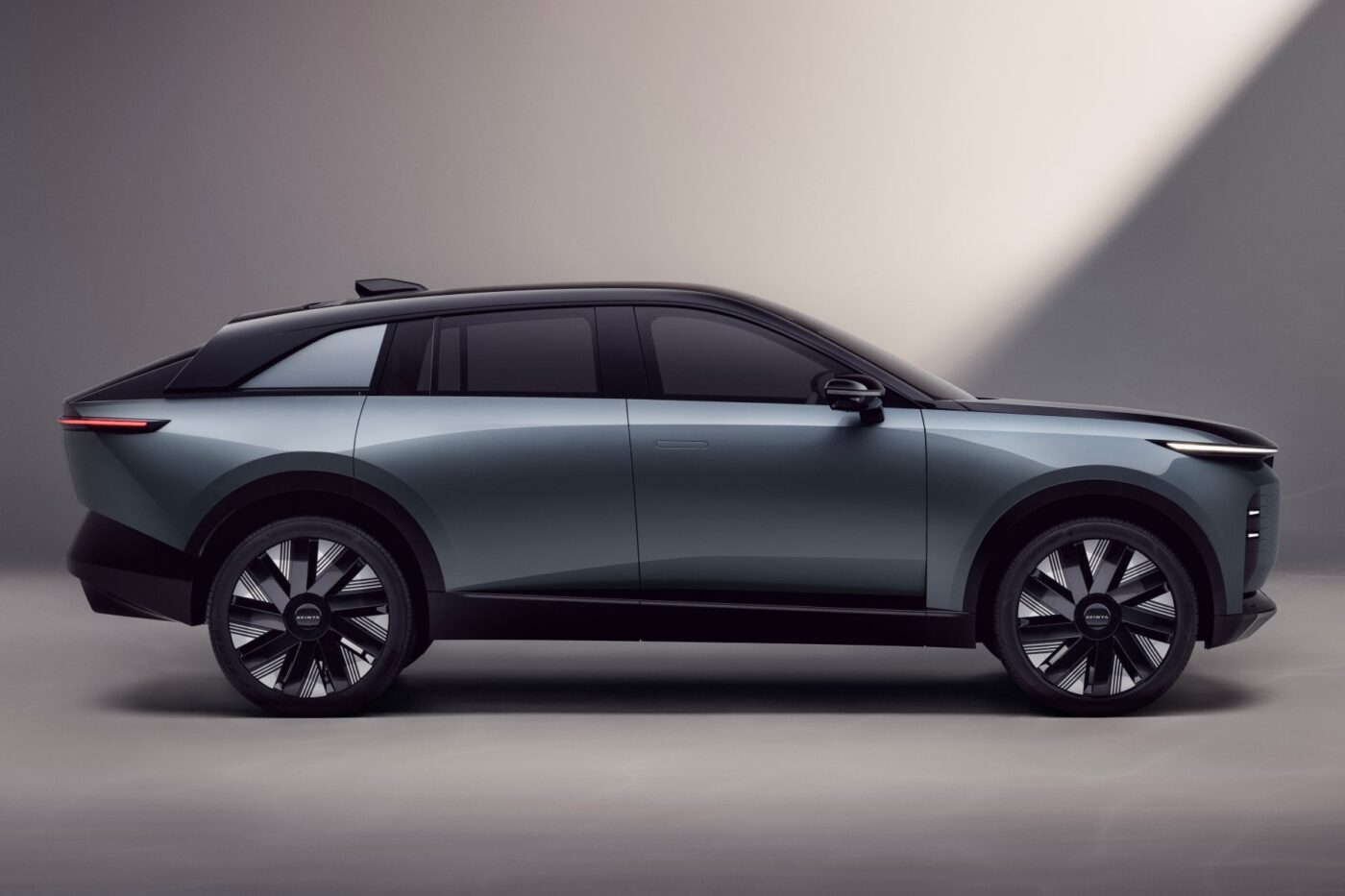
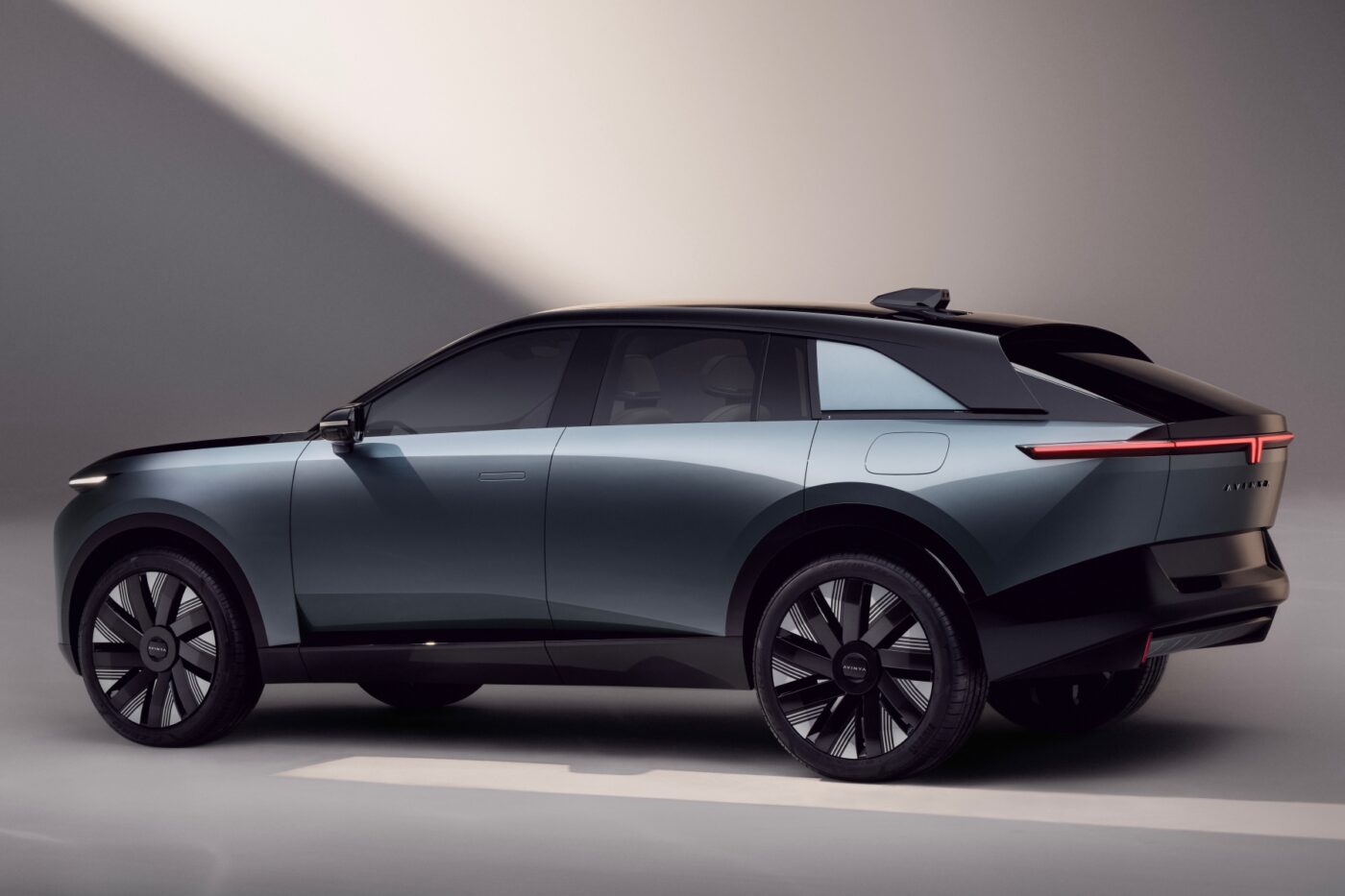
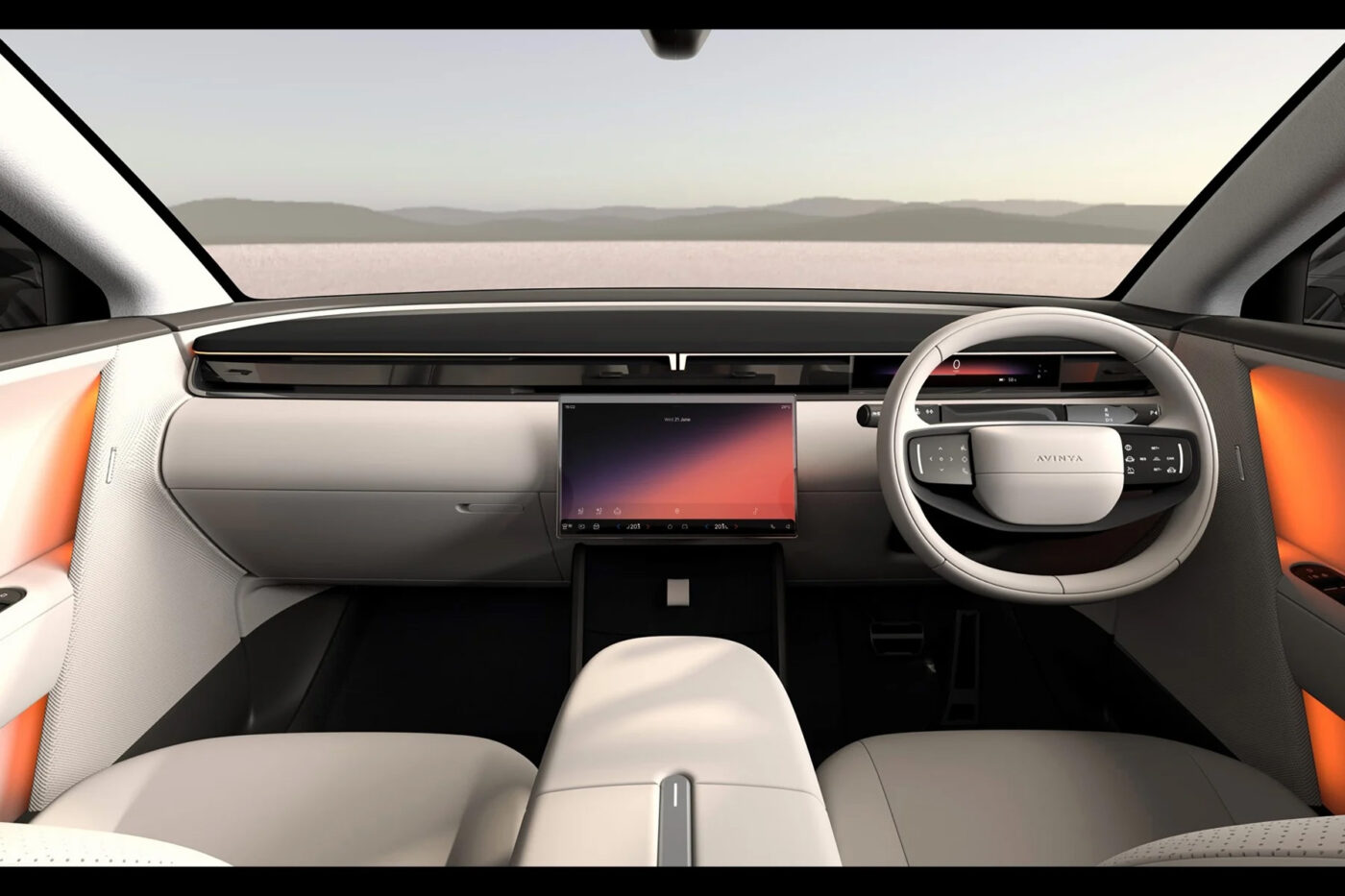
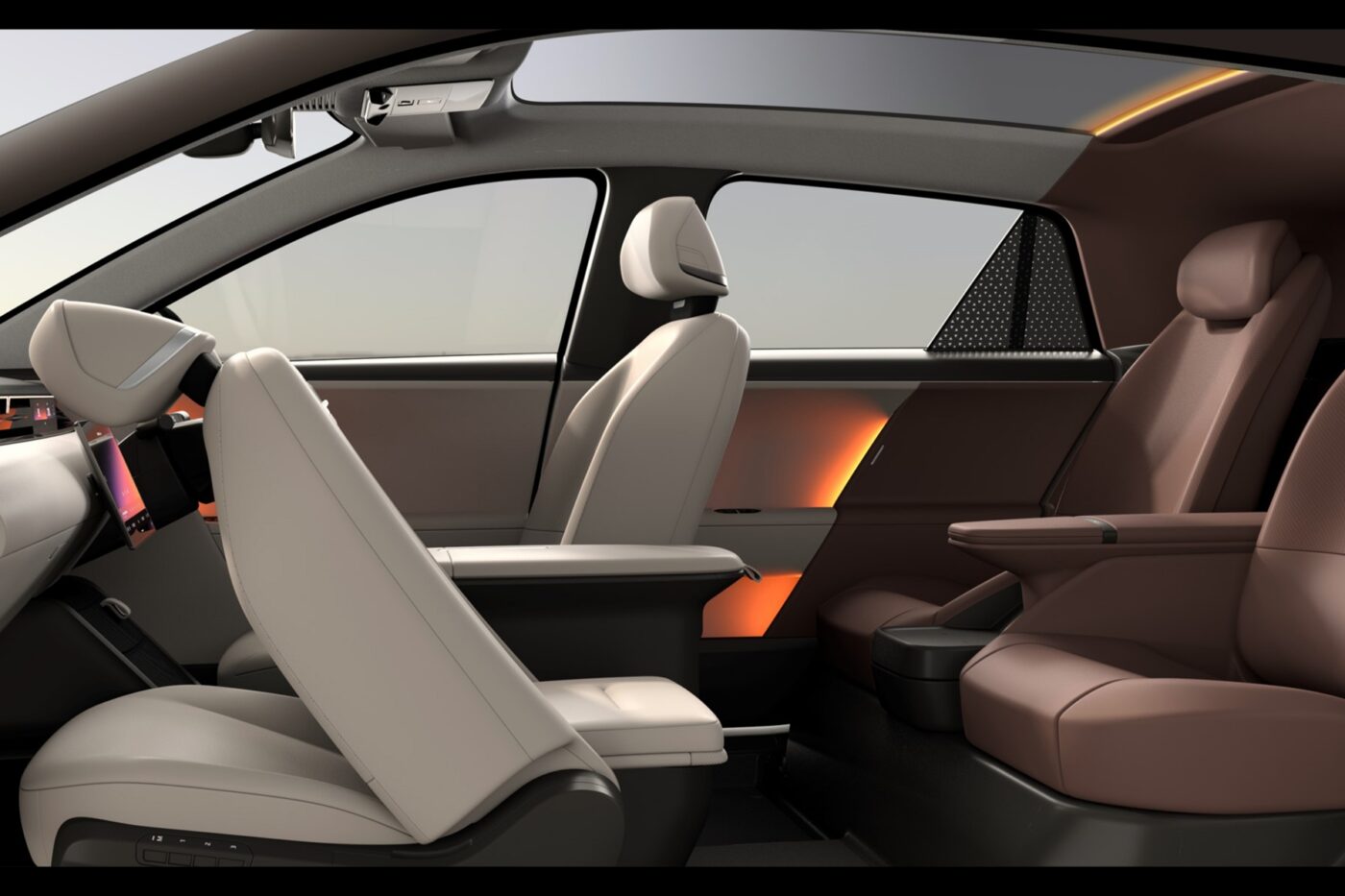
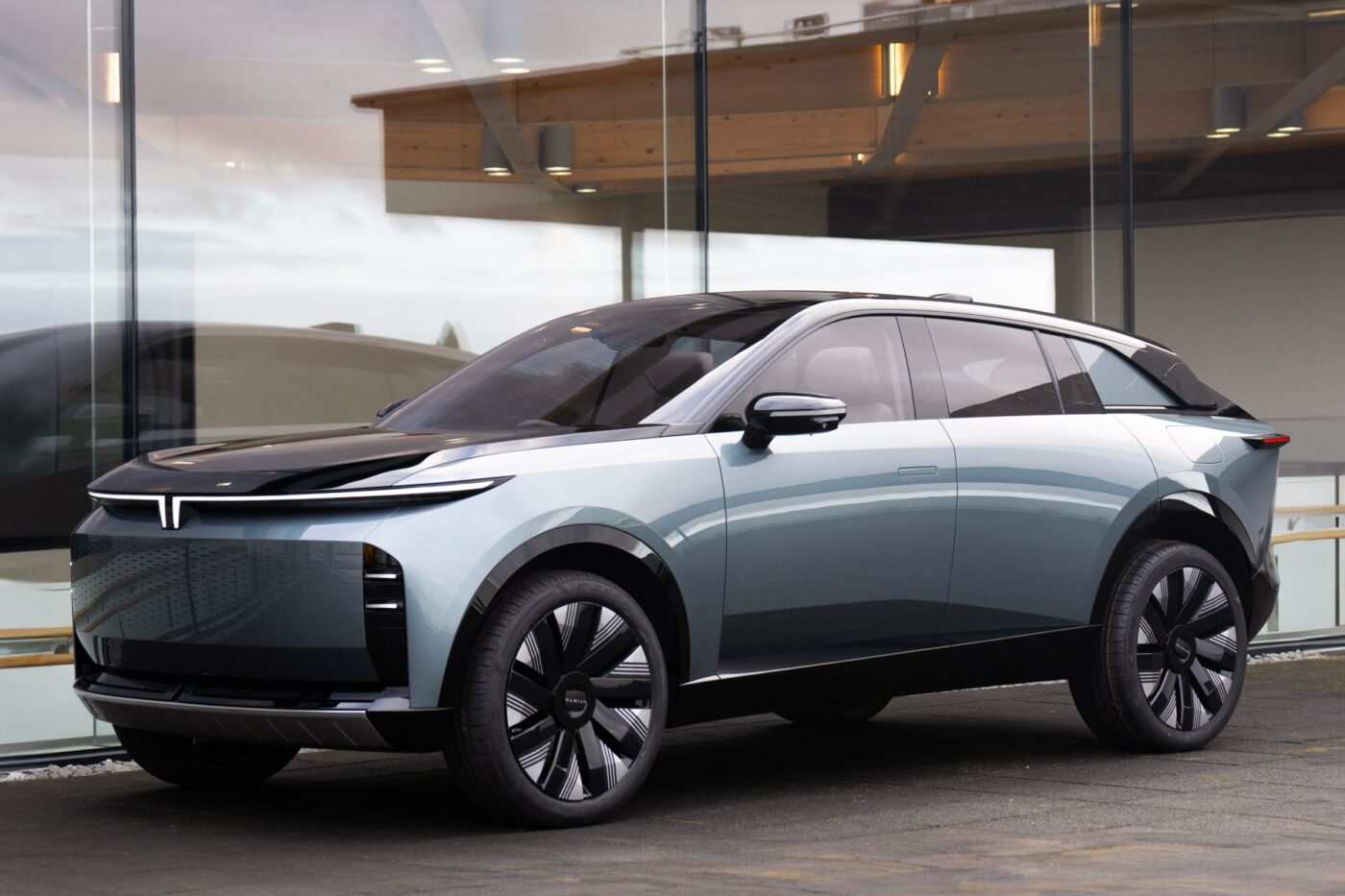
On the sides, broad shoulders and 22-inch wheels wrapped in Pirelli- 255/45 R22 tyres lend the Avinya X an athletic stance. In contrast, the coupe-like roofline tapered roofline, the slim and curvy mirrors, the low, flush-fitted door handles in the front doors, the sleek glasshouse, and the visibly raked D-pillar contribute to its sporty styling.
The absence of rear door handles adds an element of intrigue, a subtle yet compelling detail that elevates the car’s luxury appeal. Such hidden features are often conversation starters and capture the attention of onlookers, and this level of attention to detail marks a refreshing approach from Tata Motors designers. The designers have discreetly integrated a push-button into the D-pillar to open the rear doors. A sweeping boat tail ending in the rear bumper is another nice touch of sophistication, reinforcing the EV’s luxury car status.
At the rear, the extremely flat rear windscreen continues the dynamic styling from the sides. The tail lights form a striking “T,” and the small, block-lettered brand inscription on the clean tailgate leaves a lasting impression.
The Avinya X features a minimalist interior, like a modern living space, and accommodates four people. It has a neatly designed horizontal dashboard with hidden AC vents, an ultra-compact digital instrument cluster, and a free-standing touchscreen infotainment system with minimal bezels. A multi-colour ambient light strip repeats the subtle “T” shape here. The dashboard seamlessly connects with the door panels, giving the occupants a sense that the cabin wraps around them, providing a cocooned feeling.
The slim and simple door panels feature a fine texture in the front and subdued ambient lighting that creates a sense of calm. The elegantly rounded, two-spoke steering wheel reaffirms the Avinya X’s status as a luxury model. The door panels, centre console, and dashboard complement its design with more rounded elements.
Some part of the rear of the cabin features a contrasting terracotta colour, adding to the interior’s luxurious look. An intricate perforated pattern in the tinted part of the rear windows and rear quarter glass subtly evokes ancient architectural motifs. The backrest of the front passenger seat integrates a fold-out legrest for the passenger behind. An expansive glass roof bathes the cabin with light, giving occupants an airy feeling and keeping them energised.
Five Avinya EVs in the pipeline
According to a recent Autocar Professional report, Tata Motors is considering a family of five Avinya EVs with codenames P1, P2, P3, P4, and P5. The company plans to launch the P1 as the production version of the first Avinya concept, which it introduced in 2022, by 2026 and could price this model above 35 lakh Indian rupees (approximately 39,000 euros).
Tata Motors is looking at the P2 as a 4.4-metre compact SUV and the P3 as a 4.9-metre utility vehicle like the Volvo EM90, but it is yet to ascertain their feasibility. The company is progressing with the P4 and P5, which seem to come close to a Range Rover Sport or Velar, and the Range Rover, respectively.
Avinya’s Land Rover connection
Tata Motors plans to build Avinya EVs on the basis of JLR’s EMA platform. TPEM has an agreement with JLR to acquire a license for this platform, including its electrical architecture, EDU, battery pack, and manufacturing expertise, for a royalty fee. The company will use cell-to-pack battery technology, saving space, weight, and costs in these dedicated EVs.
In April last year it was reported that Tata Motors will build Avinya EVs alongside JLR models at its upcoming factory in Ranipet in the southern state of Tamil Nadu. The company later announced that it will make electric and luxury models at this production facility. The Ranipet plant has an annual production capacity of more than 250,000 vehicles, and according to the report, Tata Motors plans to use only one-third for itself, to build EMA platform-based EVs. It will allocate the remaining volume to EMA-based JLR EVs, presumably all from the Land Rover brand.
India and the UK are discussing an FTA, and should they succeed with the cooperation, Tata Motors would gain significant advantages from establishing a low-cost production base for JLR in India. Additionally, the company is considering relocating the production of some ICE models to India, including not only the Ranipet factory but also the existing plants in Sanand (Gujarat) and Pune (Maharashtra) in the western part of the country.
Tata Motors’ EV journey so far
Tata Motors started selling electric cars in 2017, initially only to fleet customers. The company expanded the availability to personal buyers in 2019. At Auto Expo 2025, Chandra said the company has achieved a cumulative sales milestone of over 200,000 EVs. Customers of these 200,000+ EVs have collectively clocked over five billion kilometres and avoided 700,000 tonnes of CO2 emissions – equivalent to planting 30 million trees. Individually, more than 8,000 of them have driven over 100,000 kilometres.
Currently, Tata Motors gives its EV customers access to more than 18,000 public chargers through a collaboration with Tata Power EZ Charge, Shell Recharge, Charge Zone, and various other CPOs in India. At Auto Expo 2025, Chandra announced that the company will build a charging network of its own and install over 500 chargers across the country, although he did not reveal a specific timeline.
tatamotors.com (Auto Expo), moneycontrol.com (FTA)




0 Comments